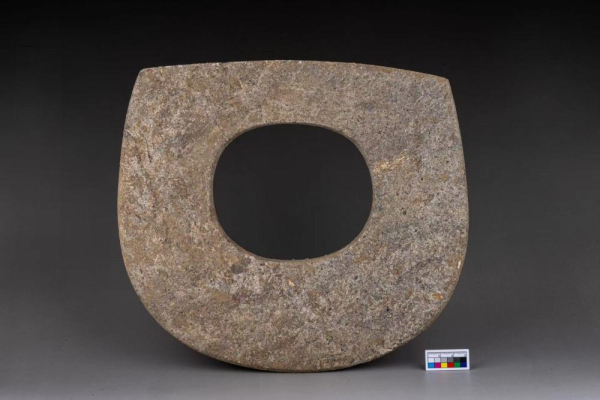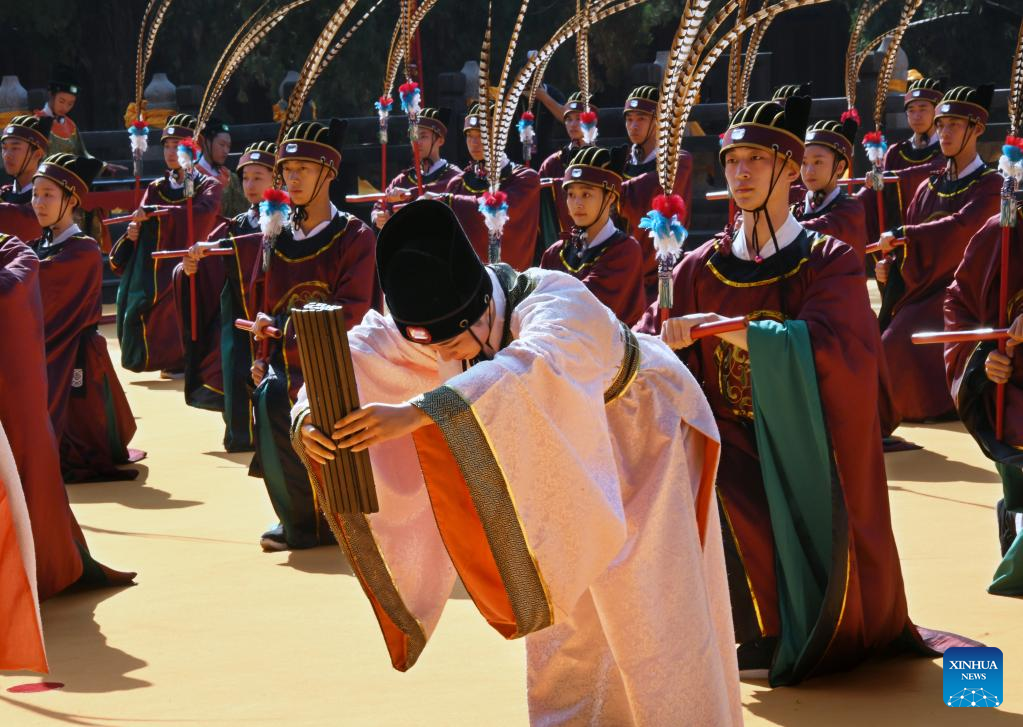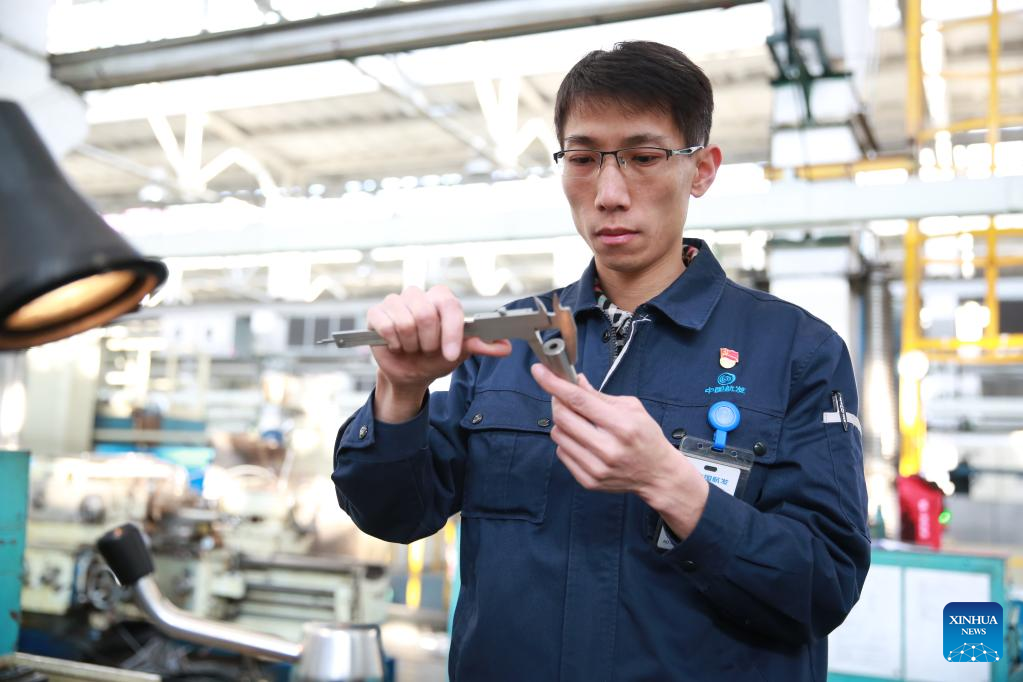
(Photo provided to Xinhua Daily)
A stone axe (yue) excavated from Sanxingcun, a Neolithic archaeological site in Changzhou City, is considered the largest well-preserved of its kind ever found in the country.
Archaeologists have reported recent findings from the site, include bone tools, jade ware and stone tools.
The Sanxingcun site covers a total area of 350,000 square meters. The first phase of excavation from 1993 to 1998 unearthed more than 4,000 relics, making it one of China’s top 10 archaeological discoveries in 1998. The second phase began in April 2023, focusing on the residential and burial areas, and has already yielded many relics, including precious artifacts.
Li Moran, an associate researcher at the CASS Institute of Archaeology, said the 36 cm-wide yue with a large hole for insertion of handle was found in a tomb of a male owner, which is significantly larger than the surrounding tombs. A stone pot (fu) and a three-holed stone knife were also found by his waist.
The stone axe shows no sign of use, indicating that the device was regarded as a symbol of power and a ceremonial item to signify status, according to Li.
"The transition from the stone axe in Sanxingcun to the jade axe in Liangzhu culture and then the bronze axe during the Shang and Zhou dynasties (c. 16th century-256 BC) helps understand the origin and evolution of China's power system," Li added.
Previously, a stone axe with a width of about 10 centimeters, also unearthed in Sanxingcun, was designated as a national first-class cultural relic.




















